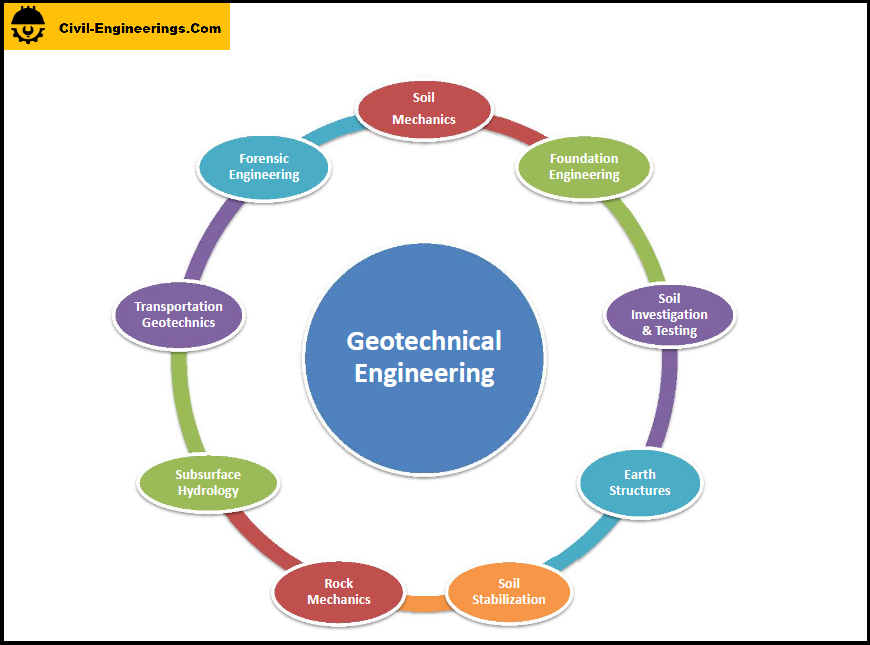The Ultimate Guide To Geotechnical Engineering For Construction Projects
The Ultimate Guide To Geotechnical Engineering For Construction Projects
Blog Article
Our Geotechnical Engineering For Construction Projects Statements
Table of ContentsGetting My Geotechnical Engineering For Construction Projects To WorkThe Buzz on Geotechnical Engineering For Construction ProjectsWhat Does Geotechnical Engineering For Construction Projects Do?Rumored Buzz on Geotechnical Engineering For Construction ProjectsGeotechnical Engineering For Construction Projects Things To Know Before You Get This10 Simple Techniques For Geotechnical Engineering For Construction Projects
The role of geotechnical design significantly handles recognizing the attributes of soil and rock, which may vary dramatically by their density, wetness material etc. These attributes have to be checked out by geotechnical designers to forecast their motions under numerous scenarios. The safety and security in addition to security of frameworks are influenced by soil problems, making this analysis required., in enhancement to just how they interact with building and constructions that have been erected on or within them, is one of the primary descriptions for why geotechnical engineering is vital.
In addition to structural preparation and building, geotechnical engineering is also important to the restoration and maintenance of pre-existing frameworks. Age-related degradation or added troubles could influence a structure's stability and effectiveness. Environmental defense is accomplished via geotechnical engineering. Expertise in air, water, and dirt top quality upkeep is put to use by geotechnical engineers to decrease the adverse results of tasks.
To sum up, geotechnical design is an essential technique that maintains the durability and stability of civil facilities. Geotechnical designers add to making building projects efficient all over the world by comprehending the behaviour of planet products and applying ideal planning approaches.
Geotechnical Engineering For Construction Projects - An Overview
By examining soil, rock, and subsurface problems, geotechnical engineers provide necessary understandings that aid in the layout, building and construction, and upkeep of structures and infrastructure.

The Main Principles Of Geotechnical Engineering For Construction Projects
Research laboratory screening: Determining the properties of soil and rock. A number of prominent building and construction projects have actually efficiently made use of geotechnical engineering to ensure their stability and safety.

As a leader in geotechnical engineering, BECC Inc. is devoted to delivering ingenious and effective remedies that find out here now meet the highest possible standards of top quality and safety and security., a mechanical engineer and geologist.
An Unbiased View of Geotechnical Engineering For Construction Projects
Terzaghi additionally created the framework for concepts of bearing ability of structures, and the concept for forecast of the rate of settlement of clay layers due to loan consolidation. Afterwards, Maurice Biot totally created the three-dimensional dirt loan consolidation concept, extending the one-dimensional model formerly established by Terzaghi to much more general theories and introducing the set of fundamental equations of Poroelasticity.
Geotechnical engineers investigate and establish the homes of subsurface conditions and products. They also design corresponding earthworks and retaining structures, passages, and structure foundations, and may manage and examine sites, which might additionally involve website tracking as well as the threat evaluation and mitigation of all-natural risks - Geotechnical Engineering for Construction Projects. Geotechnical over here engineers and design geologists carry out geotechnical investigations to obtain information on the physical residential properties of dirt and rock underlying and beside a site to design earthworks and foundations for recommended structures and for the repair work of distress to earthworks and structures caused by subsurface conditions.
Geotechnical Engineering For Construction Projects for Dummies
Geologic mapping and interpretation of geomorphology are normally finished in consultation with a geologist or engineering geologist. Subsurface exploration generally involves in-situ screening (as an example, the standard infiltration examination and cone penetration examination). The digging of test pits and trenching (specifically for finding faults and slide airplanes) might likewise be used to discover dirt conditions at depth. Still, they are often utilized to allow a geologist or designer to be decreased right into the borehole for direct visual and hands-on assessment of the dirt and rock stratigraphy. Various dirt samplers exist to meet the needs of different design tasks. The conventional infiltration examination, which uses a thick-walled split spoon sampler, is one of the most typical way to collect disrupted examples.

Typically, the user interface's specific geometry is unknown, and a streamlined interface geometry is presumed. Finite inclines need three-dimensional versions to be assessed, so most inclines are evaluated assuming that they are infinitely vast and can be represented by two-dimensional versions.
The Ultimate Guide To Geotechnical Engineering For Construction Projects
Producing the layout based on a functioning theory of actions prepared for under the most potential problems. Option of quantities to be observed as construction earnings and computing their anticipated worths based on the functioning theory under the most negative conditions.
Dimension of amounts and examination of actual problems. It is unsuitable for jobs whose design can not be modified during building and construction.
Report this page